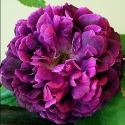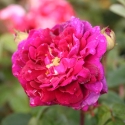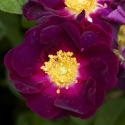Gallica




Two of my very favourite "old" roses, "Anais Segales" and "Complicata" belong to the Gallica family and if they can be considered typical of the species then they are very easy to grow. R."Anais Segales" can be seen on many an old farm entrance way or fence line in NZ and can be recognized by its showy rich mauve blooms with the most exquisite petal formation.
If you don't notice the flowers immediately you will certainly smell the delicious perfume wafting through the air in early October as "Anais Segales" is one of the first roses to flower in spring. R. "Complicata" by way of contrast is a simple single rose of show-off pink and in full bloom it is a wonderful sight.
READ MORE
Gallica roses are another ancient species, and Rosa gallica Officinalis is better known as the Apothecary's Rose or Red Rose of Lancaster. Remember the War of the Roses between Lancaster and York? The White Rose of York is actually Rosa alba. The roses represented the warring factions of Lancaster and Yorkshire. Today peace is kept by R. damascena versicolor also known as R. York, and Lancaster which is a combination of blush pink and white.
Anyway back to Gallica roses which are characterized by neat rounded foliage with a serrated edge in a soft grey green tone. The plants are usually well contained at a height of no more than 1.5m. Warning: if grown from a cutting they will sucker and spread which is not necessarily a bad thing.
Most garden centre plants will be grafted and therefore not prone to spreading out of control. Many Gallicas have a strong fragrance but not all, so check out our individual descriptions. The flower colour ranges from deep pink to purple. Nice ornamental hips in autumn. The older wood has small bristly thorns but new growth is relatively thorn less.
One of the best features of the Gallica group is that they thrive in poor soil. So if you thought you didn't have the right conditions to grow good roses try a Gallica, we're sure you will be pleased with the results.
READ LESS
0 LISTINGS FOR GALLICA
PAGE 1 ALL HL Nurseries Limited t/a Wairere Nursery0 LISTINGS FOR GALLICA
826 Gordonton Road, R D 1, Hamilton 3281 Ph: (07) 824 3430 Email: